
Art has been an integral part of human culture and expression for thousands of years. It reflects the thoughts, emotions, and creativity of individuals and societies, serving as a testament to the human experience. In today’s world, with the rise of artificial intelligence and machine-generated art, it is important to remember the value and significance of human-created art. While AI-generated art can be impressive, there is something about human-created art that can’t be replicated by a machine.
One aspect of human-created art that demonstrates its value is the high price that some artworks fetch on the market. The art market is a complex and competitive industry where collectors and investors seek out the most valuable and sought-after artworks. In this article, we will explore the top 10 priciest arts in the world and examine what makes them so valuable.
Despite the increasing prevalence of AI-generated art, human-created art continues to amaze people with its beauty and value. The intricate details, rich history, and unique stories behind these artworks make them even more special. Join us as we take a closer look at some of the most expensive and prized works of art in the world.
The art market is notoriously fickle, with values that fluctuate based on factors such as rarity, historical significance, and popularity. However, certain artworks have consistently held their value over the years and are considered some of the most valuable in the world. Here are the top 10 priciest arts in the world:
Each of these artworks has a unique story and history, and their value is determined by a variety of factors, such as their rarity, provenance, and condition. These artworks represent some of the finest examples of human creativity and artistic expression, and they continue to inspire and captivate people all over the world.
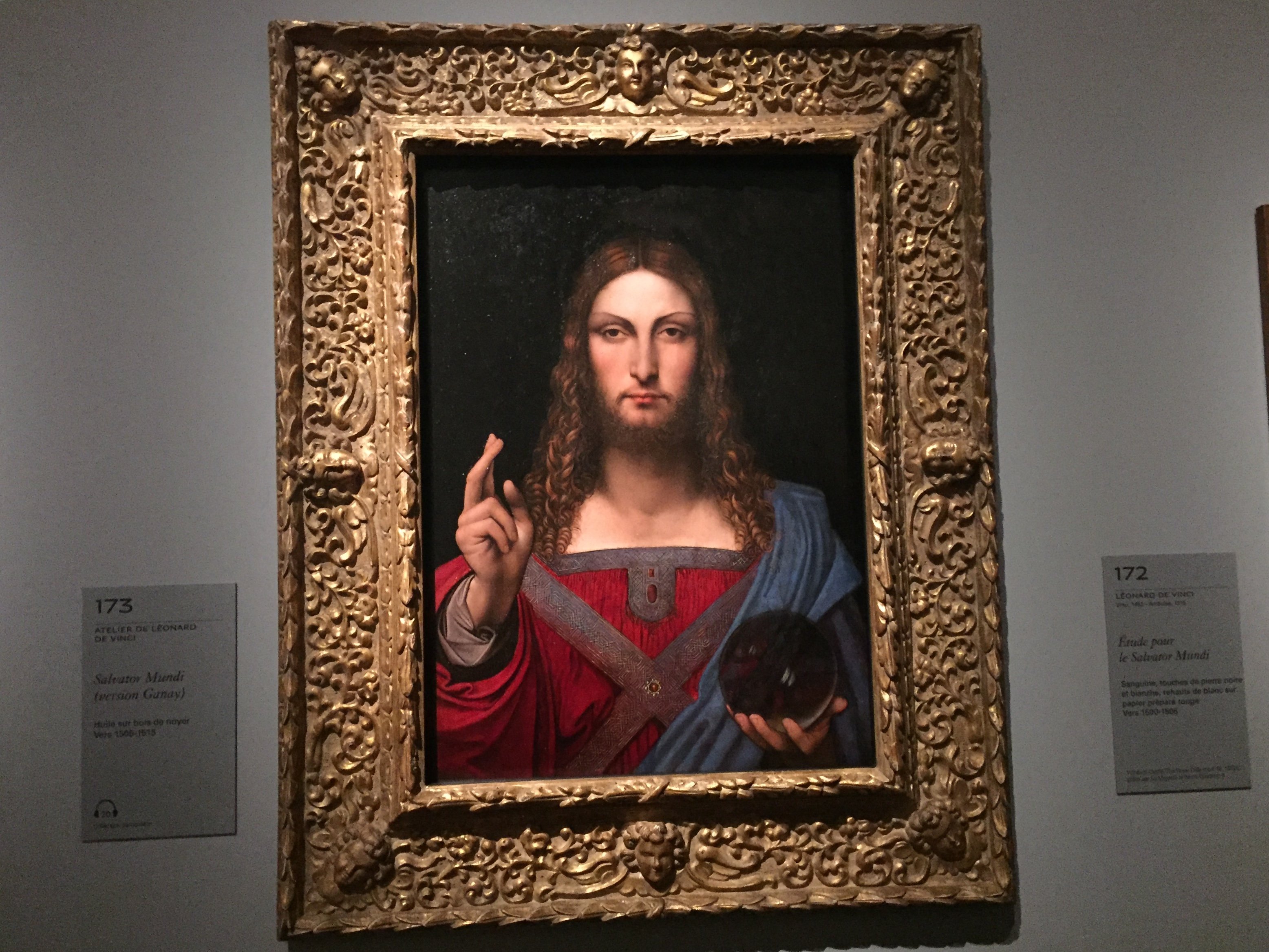 Salvator Mundi, or "Savior of the World," is a portrait of Jesus Christ that was painted by Leonardo da Vinci in the early 1500s. The painting depicts Christ holding a crystal orb, symbolizing the world, with his other hand raised in a blessing. The painting was lost for centuries until it resurfaced in 2005 and was eventually authenticated as a da Vinci original. In 2017, the painting sold for a staggering $450.3 million, making it the most expensive artwork ever sold at auction.
Salvator Mundi, or "Savior of the World," is a portrait of Jesus Christ that was painted by Leonardo da Vinci in the early 1500s. The painting depicts Christ holding a crystal orb, symbolizing the world, with his other hand raised in a blessing. The painting was lost for centuries until it resurfaced in 2005 and was eventually authenticated as a da Vinci original. In 2017, the painting sold for a staggering $450.3 million, making it the most expensive artwork ever sold at auction.

Interchange is an abstract painting by Dutch-American artist Willem de Kooning, created in 1955. The painting is known for its bold brushstrokes and vibrant colors, and it has been described as one of de Kooning’s most important works. The painting was purchased by hedge fund billionaire Kenneth C. Griffin in 2015 for $300 million, making it one of the most expensive artworks ever sold.

The Card Players is a series of paintings by French artist Paul Cézanne, created in the early 1890s. The paintings depict peasants playing cards and are known for their realistic portrayal of everyday life. The most expensive of the series sold for $250 million in 2011 to the royal family of Qatar. The painting had previously been owned by the Greek shipping magnate George Embiricos, who had acquired it in the 1950s.
Number 17A is an abstract painting by American artist Jackson Pollock, created in 1948. The painting is known for its complex layering of dripped and poured paint, which creates a sense of movement and energy. The painting was sold in 2016 for $200 million, making it one of the most expensive artworks ever sold.
%20Mark%20Rothko.jpg?ezimgfmt=rs:357x603/rscb1/ngcb1/notWebP)
No. 6 (Violet, Green and Red) is an abstract painting by American artist Mark Rothko, created in 1951. The painting is known for its large size and its use of bold, saturated colors. Rothko believed that his paintings had a spiritual quality and could evoke deep emotions in viewers. The painting was sold in 2014 for $186 million, making it one of the most expensive artworks ever sold.
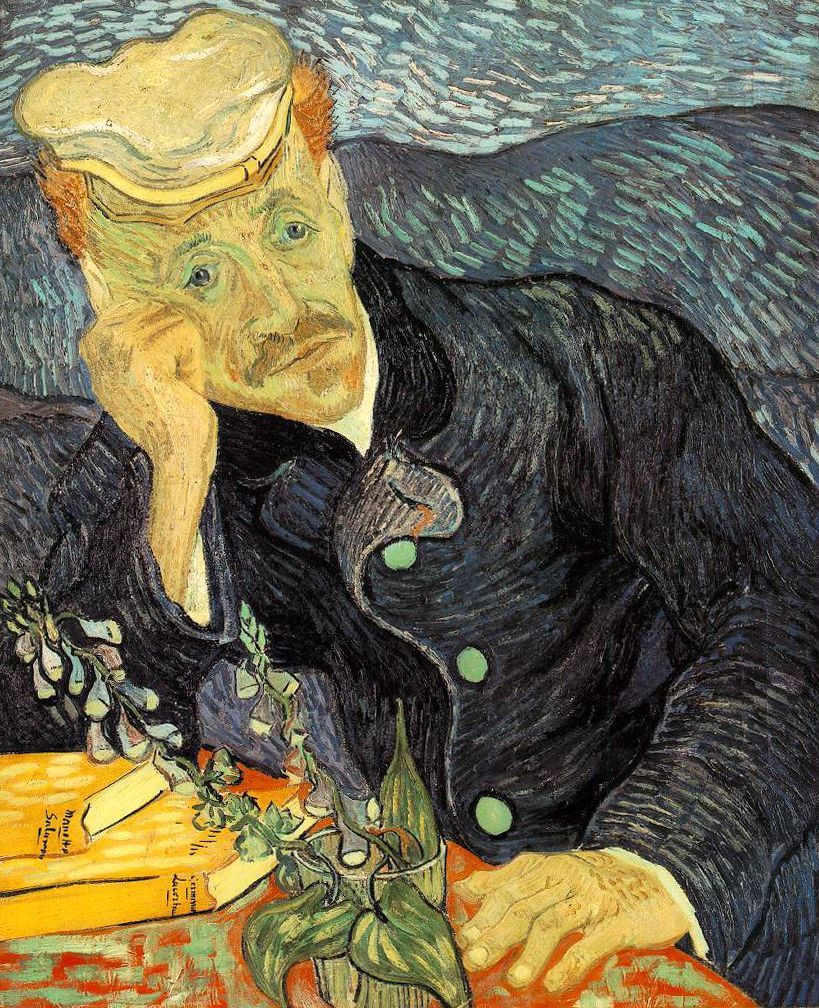
Portrait of Dr. Gachet is a painting by the Dutch Post-Impressionist artist Vincent van Gogh. The painting depicts Dr. Paul Gachet, who was one of Van Gogh’s physicians during the final months of his life. The painting was completed in 1890 and was sold at auction in 1990 for $82.5 million, making it the most expensive painting ever sold at the time.
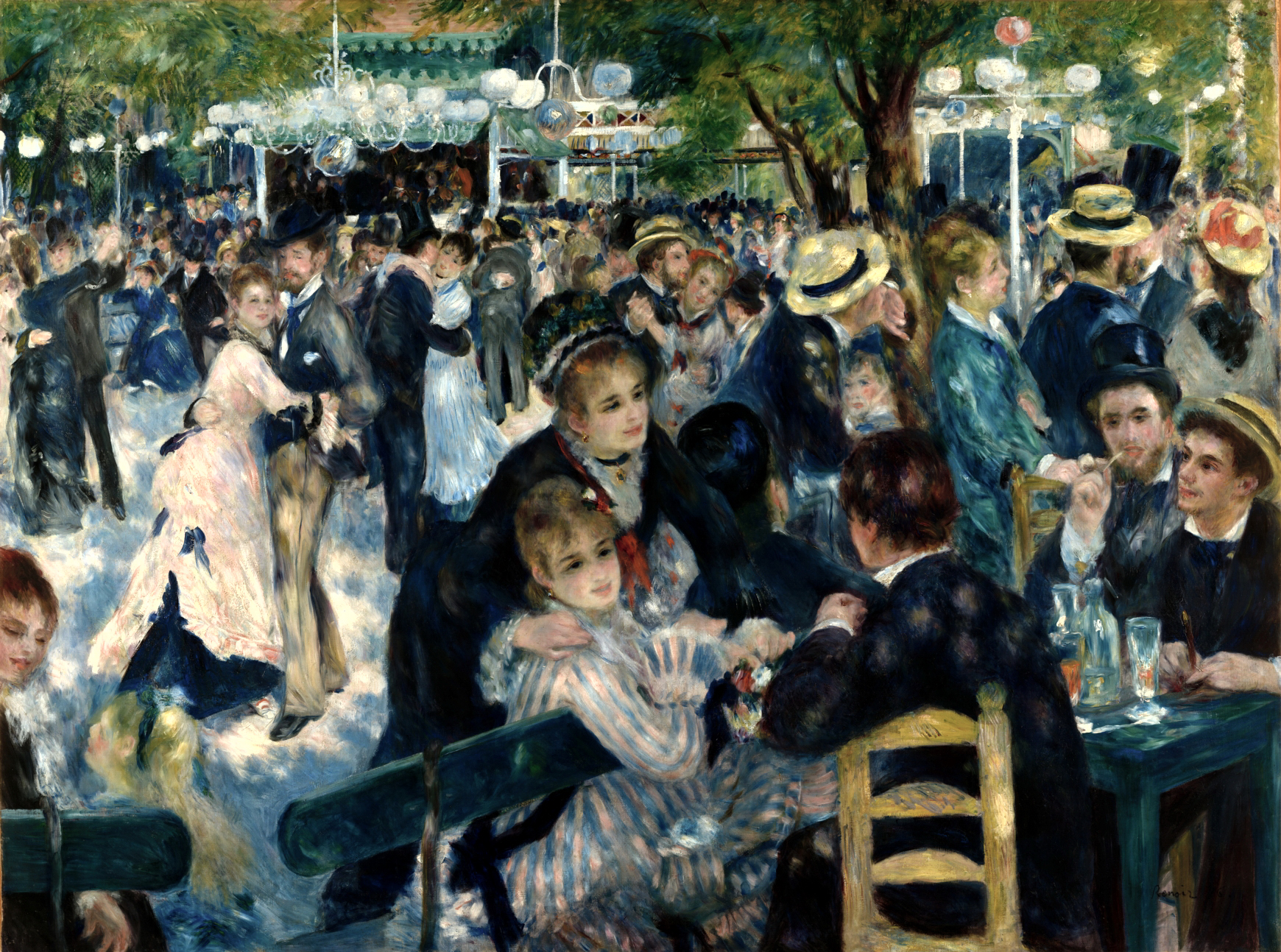 Bal du moulin de la Galette is a painting by the French Impressionist artist Pierre-Auguste Renoir. The painting depicts a typical Sunday afternoon at a popular dance garden in Paris in the late 19th century. The painting was completed in 1876 and was sold at auction in 1990 for $78.1 million.
Bal du moulin de la Galette is a painting by the French Impressionist artist Pierre-Auguste Renoir. The painting depicts a typical Sunday afternoon at a popular dance garden in Paris in the late 19th century. The painting was completed in 1876 and was sold at auction in 1990 for $78.1 million.
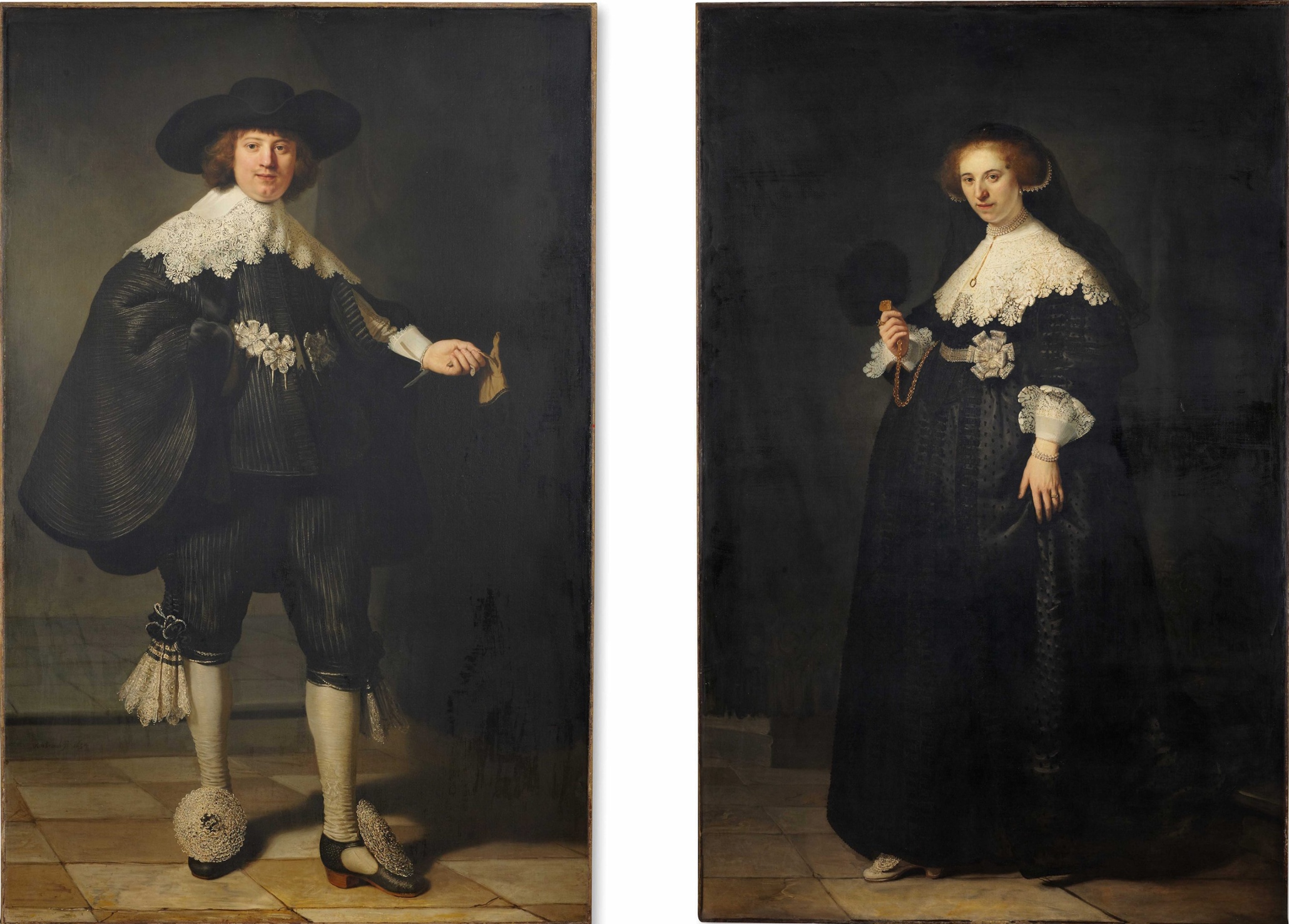 These full-length portraits were painted by Rembrandt in 1634 to commemorate the marriage of Maerten Soolmans and Oopjen Coppit. The paintings remained in private collections for centuries before being jointly purchased by the Louvre and the Rijksmuseum in 2015 for a reported €160 million. The portraits are now considered national treasures in both France and the Netherlands.
These full-length portraits were painted by Rembrandt in 1634 to commemorate the marriage of Maerten Soolmans and Oopjen Coppit. The paintings remained in private collections for centuries before being jointly purchased by the Louvre and the Rijksmuseum in 2015 for a reported €160 million. The portraits are now considered national treasures in both France and the Netherlands.
.jpg?mode=max) This triptych portrait of the British painter Lucian Freud was painted by Francis Bacon in 1969. Bacon was a close friend and collaborator of Freud, and the three panels show him seated in different positions. In 2013, the triptych sold at auction for a record-breaking $142.4 million, making it the most expensive artwork ever sold at auction at the time.
This triptych portrait of the British painter Lucian Freud was painted by Francis Bacon in 1969. Bacon was a close friend and collaborator of Freud, and the three panels show him seated in different positions. In 2013, the triptych sold at auction for a record-breaking $142.4 million, making it the most expensive artwork ever sold at auction at the time.
 This portrait, which depicts a wealthy Jewish salon hostess, was painted by Gustav Klimt in 1912. The painting was confiscated by the Nazis during World War II and remained missing until it was recovered by Adele's niece in the 1990s. In 2006, it was sold at auction for $87.9 million, setting a new record for the most expensive artwork sold privately.
This portrait, which depicts a wealthy Jewish salon hostess, was painted by Gustav Klimt in 1912. The painting was confiscated by the Nazis during World War II and remained missing until it was recovered by Adele's niece in the 1990s. In 2006, it was sold at auction for $87.9 million, setting a new record for the most expensive artwork sold privately.
In today’s world, where technology and artificial intelligence are becoming more and more advanced, the role of human creativity and artistic expression remains as important as ever. There is something uniquely powerful and meaningful about works of art that are created by human beings, whether it be a painting, sculpture, or other form of art.
One of the key reasons for the continued value of human-created art is its ability to express emotion and convey meaning. Art has the power to communicate ideas and feelings in a way that language alone cannot. Through visual elements such as color, texture, and form, artists are able to create works that evoke a wide range of emotions, from joy and excitement to sadness and contemplation.
Moreover, human-created art carries with it a rich cultural and historical significance that can connect us to our shared human experience. From ancient cave paintings to contemporary art installations, art has been used as a means of cultural expression, storytelling, and identity formation throughout human history.
In addition to its intrinsic value as a form of expression and cultural heritage, human-created art also has significant economic value. As we have seen from the examples of the priciest artworks in the world, art can be a lucrative investment, with some works fetching millions or even billions of dollars.
But beyond its monetary value, art also contributes to the economy in other ways, such as through tourism and job creation in the arts industry. Art has the ability to bring people together and inspire creativity and innovation, making it an important part of our cultural and social fabric.
As we move further into the age of technology and artificial intelligence, the future of human-created art may seem uncertain. Some may even question the relevance and importance of art in a world dominated by technology and science.
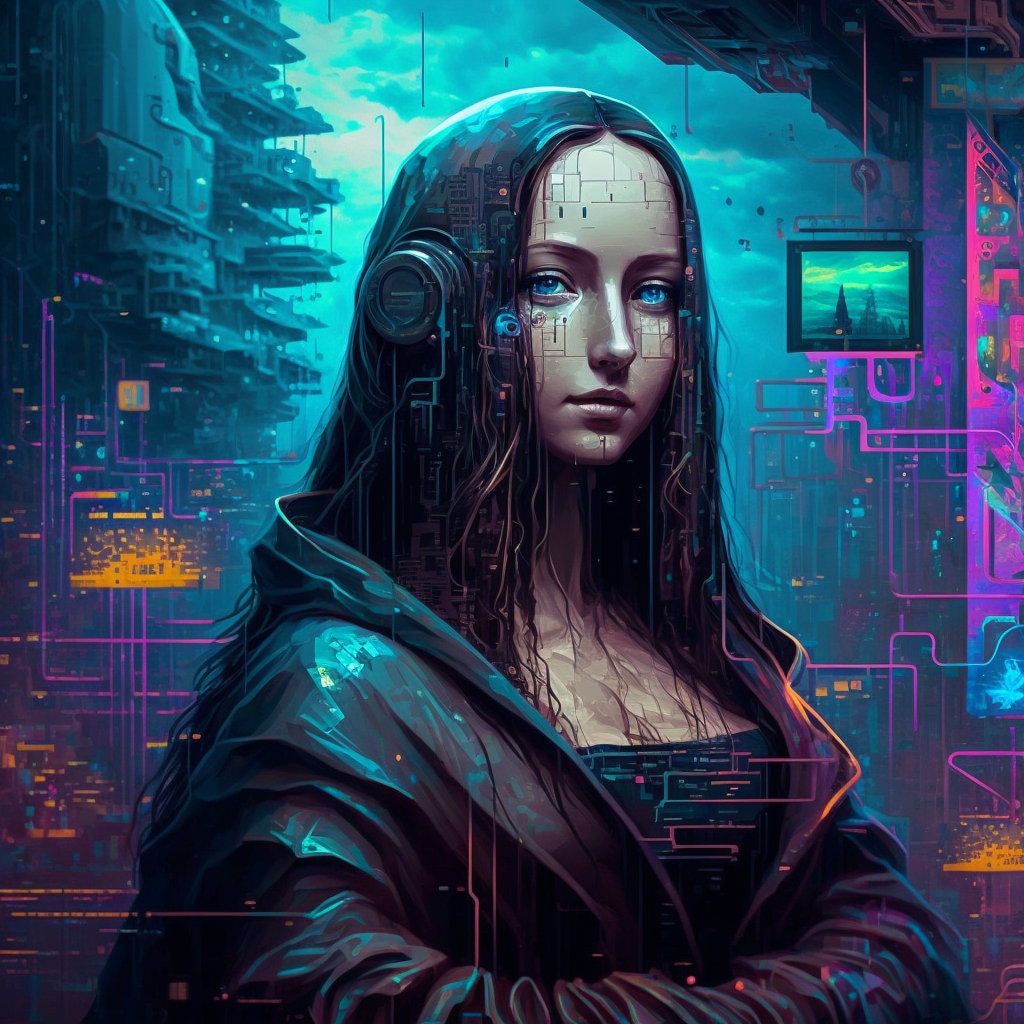
AI Generated Mona Lisa - Photo by: Drasen - Etsy
However, it is important to remember that human creativity and artistic expression have always adapted and evolved alongside technological advancements. For example, the development of photography did not diminish the value of paintings and sculptures, but rather opened up new possibilities for artistic expression.
Similarly, emerging technologies such as virtual reality and 3D printing are already being used by artists to create new forms of art and enhance the viewer’s experience. As technology continues to evolve, it is likely that artists will continue to find new and innovative ways to create and share their work.
Moreover, the continued demand for human-created art and its cultural and economic significance suggest that it will remain a vital part of our society. While AI-generated art may be impressive in its own right, it is unlikely to replace the emotional depth and cultural significance of human-created art.
In conclusion, the world of art is diverse and ever-evolving, from the ancient cave paintings to the modern masterpieces that captivate us today. In this article, we have explored the top 10 priciest arts in the world and their fascinating stories, from the iconic “Salvator Mundi” to the breathtaking “Interchange” painting.
While the art world may be influenced by technology and AI-generated works, human-created art still holds immense value and cultural significance. As we continue to embrace new technologies, it is important to remember the beauty and value of human creativity and artistic expression.
These priceless works of art are not only a source of inspiration and awe but also a reflection of our shared cultural heritage. As we move forward, it is important to cherish and support the art that enriches our lives and contributes to the fabric of our society.